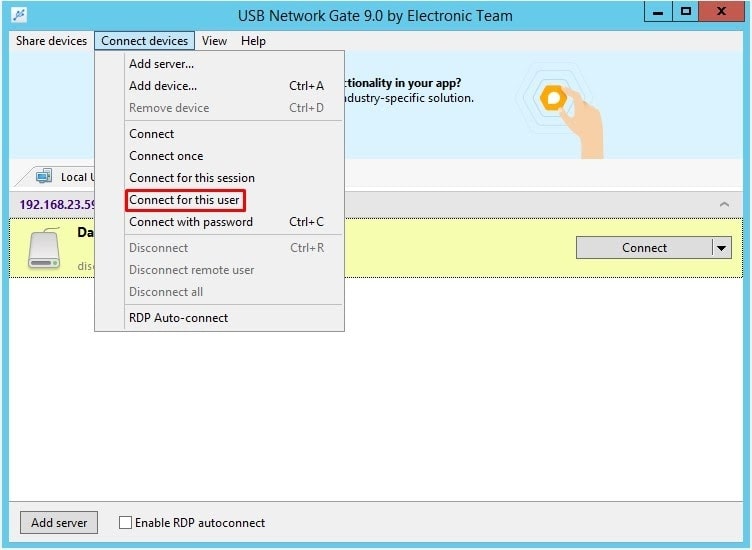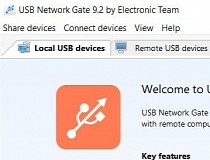

- #Usb network gate alternative how to#
- #Usb network gate alternative Offline#
- #Usb network gate alternative windows#
This article has had some time to bake in the sun while the world advanced. Reader Tim has suggested one such application and recounted his own experiences with it. I’ve never personally used any, which is why they’re not in the text. Note: a fourth option not explored in this article is software-based solutions. It’s not perfect by any stretch, but the licensing terms are favorable for most and it gets the job done.Īll of that said, it is entirely possible to use USB devices inside a Hyper-V guest, even Client Hyper-V. For most everyone else, I’d say to turn your eye to a type 2 hypervisor. If you’re using the emulators in Visual Studio, you’re sort of forced into it.

If true USB passthrough is a requirement for whatever you’ve got in mind, then Hyper-V is a poor solution. If you want more information, Microsoft has published a thorough article regarding passing through hardware on the 2016 platform that describes some of the challenges and possibilities. But, technological feasibility is beside the point. In theory, it sounds like something that could be done. Could there be a way for a type 1 hypervisor to assign a USB port to a specific guest by doing the same thing that a type 2 does? I don’t know. Hyper-V can’t do this because one operating system instance locking a USB port from all other operating system instances is just not how type 1 virtualization works. A type 2 hypervisor is essentially an application shim that is pretending to provide a root hardware device, which is fine because it doesn’t require the same degree of isolation as a type 1 hypervisor. They are kernels firmly entrenched within partitions. If you’ve ever used a type 2 hypervisor in this way, you’ll notice that they explicitly tell you that the USB device can be attached to the parent or a guest - there’s no sharing or divvying up resource access or anything of the sort. Applications have the ability to exclusively capture a USB port to prevent other applications from using it if they like this is why it’s so easily done in a type 2 hypervisor.


In a type 2 hypervisor, the management operating system is installed directly to the hardware and the hypervisor is just another application that runs within it. The very sharp distinction to be made here is that Hyper-V is a type 1 hypervisor whereas the products that provide simple USB passthrough are type 2 hypervisors. The complaint typically accompanies a negative comparison to applications such as VMware Workstation and Oracle VirtualBox, which can perform USB passthrough. I often read complaints that Hyper-V cannot perform passthrough operations for USB devices.
#Usb network gate alternative Offline#
If the Offline option is not available, the disk cannot be used as a passthrough.
#Usb network gate alternative windows#
For this reason, Windows must identify your USB drive as a “Mass Storage Device” in order for it to connect in passthrough mode. As I said in the opening paragraph, only one component can communicate with a USB device, so the Windows disk subsystem brokers I/O for all USB storage devices. Hyper-V can set up most USB disk drives in passthrough mode, but it does so via Windows’ storage subsystem.
#Usb network gate alternative how to#
How to Add Hyper-V Passthrough Support for USB Drives As a result, we face special difficulties with USB in virtualized environments. USB devices expect to communicate with only one subsystem or application at a time. Other hardware components present a greater challenge for virtualization because they are not shared, even among separate applications. Even on non-virtualized systems, these resources are shared. It focuses on CPU, disk, and memory because all operating systems and applications require them. One of the chief features of virtualization is the abstraction of the hardware.


 0 kommentar(er)
0 kommentar(er)
